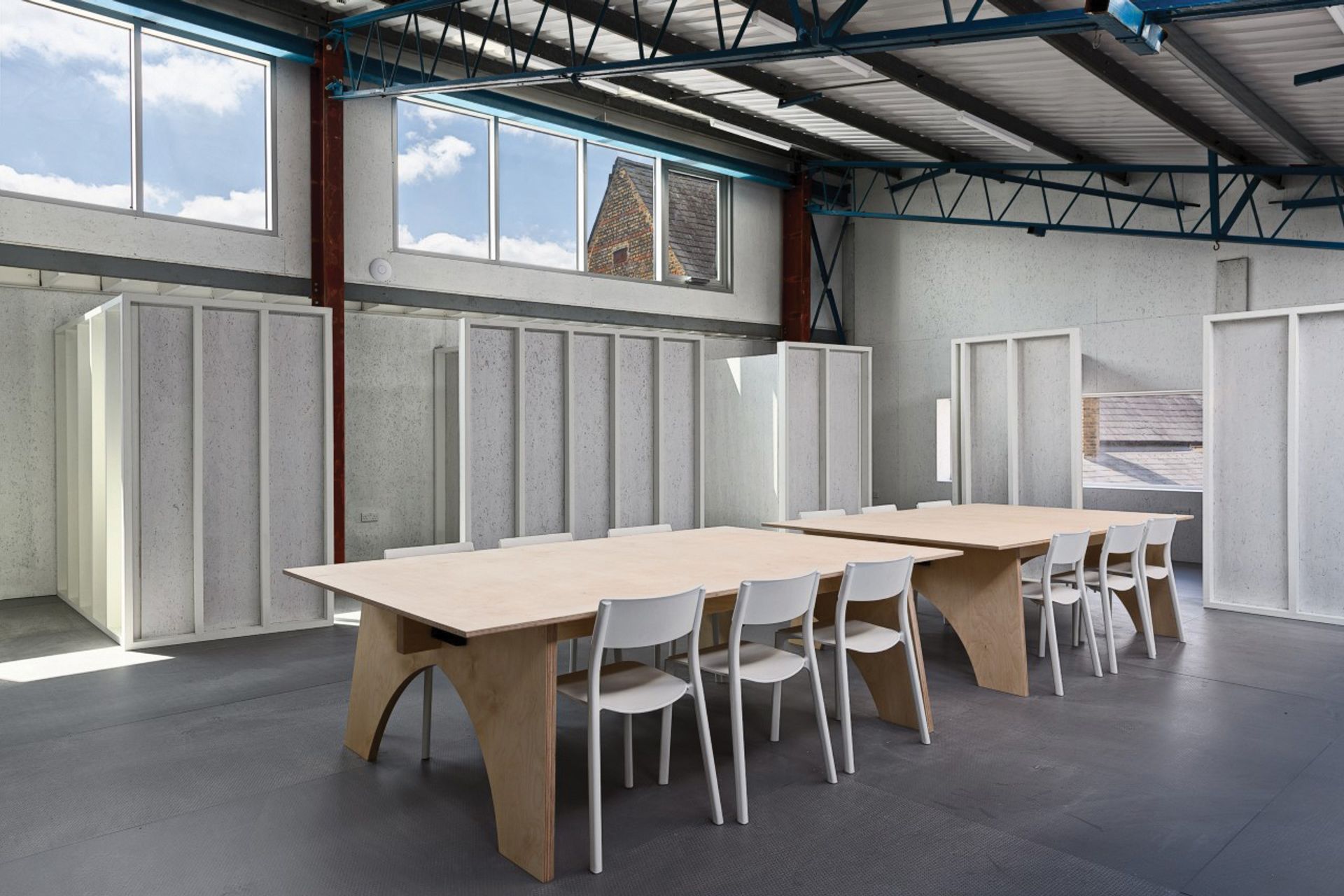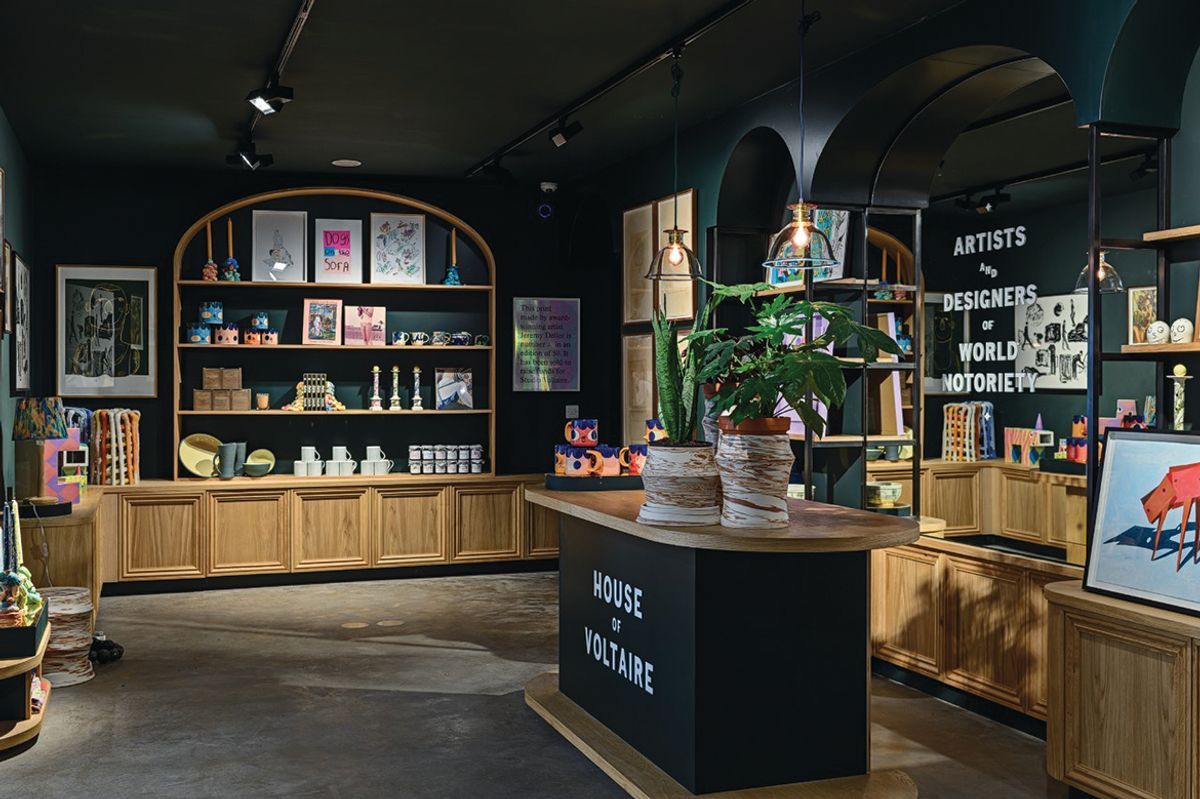Studio Voltaire, the not-for-profit art space housed in a former Victorian Methodist chapel in Clapham, south London, is a small organisation with big impact. Since its foundation in 1994, Studio Voltaire has given early and often crucial exposure to artists from the UK and beyond. Among those who have had specially commissioned shows at pivotal moments in their careers are Phyllida Barlow, Anthea Hamilton, Alexandra Bircken, Charlotte Prodger, Nicole Eisenman and Nairy Baghramian.
“I owe so much to Studio Voltaire,” says Barlow, who credits her 2010 solo exhibition there with “providing me with new prospects which have endured since that time”. It is “super-fabulous”, enthuses the veteran US feminist artist Judith Bernstein, whose 2014 Voltaire commission, Rising, was her first UK solo show. “It is one of my favourite exhibitions—it gave me the opportunity to work on site in this extraordinary architecture,” she says.

One of Studio Voltaire's new studio spaces. Photo: Francis Ware
Studio Voltaire reopens on Friday following the completion of a transformative £2.8m capital project designed by the architects Matheson Whiteley. Voltaire’s distinctive vaulted gallery has been completely renovated with under-floor heating and a new roof. “When it rains, we don’t have water pouring in anymore,” says Studio Voltaire’s director, Joe Scotland.
But despite its impressive exhibition track record, there will be no increase in its gallery space.
“Studio Voltaire doesn’t need another gallery and London doesn’t need any more gallery spaces. But what we do need is more artists’ studios—so this has been our real focus,” Scotland says.
To address this citywide shortage of workplaces for artists, Voltaire’s new scheme provides affordable, high-quality spaces for 75 occupants, whereas previously there were only facilities for 30 (and these were notoriously leaky, cold and poorly insulated). “Not only have the studios massively increased by more than 42% in sq. ft, now they are also really beautiful architect-designed, properly heated, self-contained, high-quality spaces,” Scotland says.
There is also a new emphasis on community engagement. This makes the building “more open and porous”, according to Scotland. Its public spaces have more than tripled with the creation of a dedicated learning and events space, which has its own courtyard, a café, an artist’s kitchen, a sculpture workshop and two on-site workspaces to house international residency programmes for the first time.
The building is now entered through an artwork-cum-garden designed by the internationally renowned artist Anthea Hamilton, who is a long-term resident of the local area and a previous Voltaire studio holder.
At last, Studio Voltaire’s celebrated art and design shop House of Voltaire has a permanent home on site, rather than popping up all over town. And ActionSpace, a leading organisation supporting artists with learning disabilities, will increase its on-site studio provision and workspace. Even the public toilets have been given an artistic makeover with a specially commissioned installation by the UK artist duo Joanne Tatham and Tom O’Sullivan. This includes bespoke, hand-glazed ceramic tiles in vibrant colours with staring, cartoon-like faces and a hand-painted mural.
Continuing in its tradition of giving artists often long-overdue exposure, Studio Voltaire reopens with the first solo exhibition of the American artist William Scott outside the US. It is also the first retrospective of Scott’s 30-year career and includes paintings, drawings and sculptures that are both deeply rooted in Scott’s personal history and also address wider questions of citizenship, community and cultural memory. These range from portraits of predominantly Black figures such as Prince, Oprah Winfrey, Barack Obama and Kamala Harris to self-portraits and portrayals of family members, neighbours and fellow churchgoers.
• William Scott, until 2 January 2022, Studio Voltaire, 1A Nelsons Row, SW4 7JR


